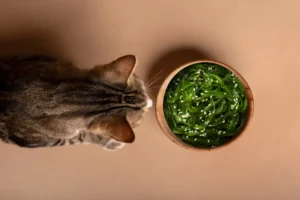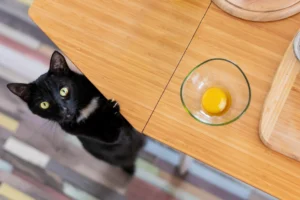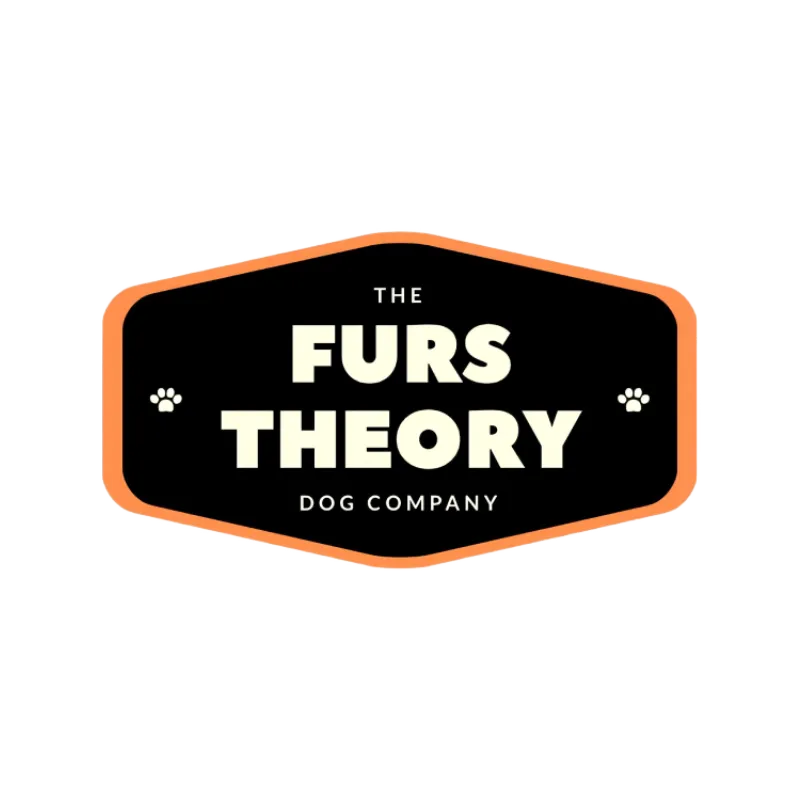Welcoming a furry friend into your home comes with the responsibility of ensuring their physical and mental well-being. Dog toys play a crucial role in providing both entertainment and stimulation for your canine companion. In this comprehensive guide, we’ll explore four engaging and interactive toys that not only keep your dog entertained but also promote their overall happiness and mental health.
1. The Significance of Dog Toys
Enriching Your Dog’s Life with Toys
Before delving into specific types of toys, let’s understand the importance of providing your dog with playtime activities. Dogs, regardless of their breed or size, have natural instincts that include chewing, chasing, and problem-solving. Dog toys serve as an outlet for these instincts, preventing boredom, anxiety, and destructive behavior.
2. Exploring Interactive Toys
Interactive Toys: A Mental Workout for Dogs
Interactive toys engage your dog’s mind, providing a mental workout that is equally important as physical exercise. These toys stimulate their problem-solving skills, keeping their cognitive functions sharp. As a pet owner, incorporating interactive toys into your dog’s routine helps enhance their intelligence and creates a positive environment.
Benefits of Interactive Toys
Interactive toys offer numerous benefits. They keep your dog mentally stimulated, reducing the risk of behavioral issues such as excessive barking or chewing. Additionally, interactive play builds a stronger bond between you and your furry friend, fostering a sense of companionship and trust.
3. Four Engaging Dog Toys
Choosing the Right Dog Toys
Before introducing specific toys, consider your dog’s size, breed, and play style. Different dogs have varying preferences, so selecting toys that align with their natural instincts ensures a more enjoyable playtime experience.
The Top 4 Engaging and Interactive Dog Toys
- Puzzle Feeders: Keeping Mealtime Interesting
Interactive feeders or puzzle toys are a fantastic way to engage your dog’s problem-solving skills. These toys dispense treats as your dog manipulates them, providing both mental stimulation and a reward. This not only adds excitement to mealtime but also encourages slower eating, promoting digestive health.
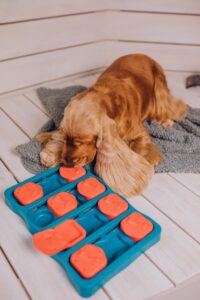
- Tug Toys: Interactive Bonding Through Play
Tug toys are excellent for interactive play between you and your dog. The back-and-forth motion engages them physically and mentally. Ensure the tug toy is sturdy and designed for safe play to prevent any injuries. This interactive activity is not only fun but also strengthens the bond between you and your furry friend.
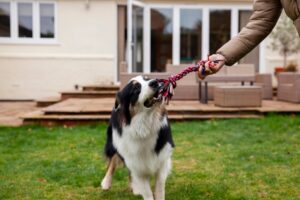
- Chew Toys: Keeping Dental Health in Check
Chew toys serve a dual purpose. Not only do they satisfy your dog’s natural instinct to chew, but they also contribute to their dental health. The act of chewing helps reduce plaque and tartar buildup, promoting healthier teeth and gums. Opt for durable and safe chew toys to ensure they withstand your dog’s chewing habits.

- Ball Launchers: Active Play for Energetic Dogs
For dogs with a high energy level, ball launchers provide an excellent outlet for physical activity. These toys allow your dog to chase and fetch, catering to their natural chasing instinct. Automatic ball launchers are also available, providing endless entertainment for your energetic pup.
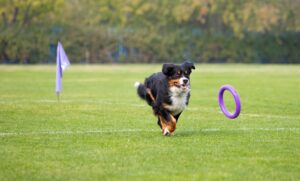
4. Ensuring Safe Play
Safety First for Happy Playtime
While engaging in play is essential, ensuring your dog’s safety is paramount. Regularly inspect toys for signs of wear or damage, and replace them if necessary. Supervise playtime, especially with new toys, to monitor how your dog interacts with them. This proactive approach ensures a safe and enjoyable play experience.
5. Training and Enrichment Through Play
Transforming Playtime into Learning Time
Incorporating training into playtime enriches the experience for both you and your dog. Utilize interactive toys as tools for obedience training or to reinforce commands. For example, you can use a puzzle feeder to encourage problem-solving skills or a tug toy to reinforce commands like “drop it” or “leave it.” By combining play and training, you engage your dog mentally and strengthen the bond between you.
Creating a Positive Learning Environment
Make play and training sessions positive experiences for your dog. Use treats as rewards for successful interactions with toys or commands. Positive reinforcement encourages desired behavior, making playtime not only entertaining but also a valuable learning opportunity.
6. Rotating Toys for Continued Interest
The Importance of Toy Rotation
Dogs, like humans, can get bored with the same toys over time. To maintain their interest, consider rotating their toys regularly. Introduce new toys while temporarily removing others. This simple strategy keeps playtime exciting, preventing your dog from losing interest in their toys.
Observing Your Dog’s Preferences
Pay attention to which toys capture your dog’s interest the most. Some dogs may prefer the mental challenge of puzzle feeders, while others may enjoy the physical engagement of tug toys. Understanding your dog’s preferences allows you to tailor their toy selection, providing a personalized and enjoyable play experience.
7. DIY Interactive Toy Ideas
Homemade Options for Budget-Friendly Fun
Engaging your dog doesn’t always require store-bought toys. You can create DIY interactive toys using household items. For example, a simple sock can become a tug toy, or a plastic bottle filled with treats can serve as a makeshift puzzle feeder. These homemade options offer budget-friendly alternatives for keeping your dog entertained.
Safety Considerations for DIY Toys
While DIY toys can be cost-effective, prioritize safety. Ensure that the materials used are non-toxic and won’t pose a choking hazard. Supervise your dog during playtime with DIY toys to prevent accidents. If a DIY toy shows signs of wear or damage, replace it promptly.
8. Understanding Your Dog’s Play Style
Tailoring Toys to Your Dog’s Personality
Every dog has a unique play style, influenced by factors such as breed, age, and individual personality. Some dogs may enjoy the challenge of solving puzzles, while others may prefer the physicality of tug-of-war. Observe your dog’s behavior during playtime to identify their preferences and tailor their toy selection accordingly.
Adjusting Toy Difficulty
Interactive toys often come with varying difficulty levels. For puzzle feeders, start with simpler designs and gradually increase complexity as your dog becomes more adept. This adaptive approach ensures that the toys remain engaging without becoming frustrating for your furry friend.
9. Outdoor Play and Exercise
Extending Playtime to the Great Outdoors
In addition to indoor play, outdoor activities are crucial for your dog’s physical and mental well-being. Incorporate toys suitable for outdoor play, such as frisbees or fetch balls. These toys allow your dog to indulge their natural instincts to run, jump, and explore, promoting a healthy and active lifestyle.
Safety Considerations for Outdoor Toys
When choosing outdoor toys, consider the environment and your dog’s safety. Ensure toys are durable and can withstand outdoor conditions. Additionally, be mindful of potential hazards such as sharp objects or toxic plants in the play area. Supervise outdoor play to prevent accidents and ensure a safe and enjoyable experience.
Conclusion
In summary, providing your dog with engaging and interactive toys goes beyond mere entertainment. It contributes to their mental stimulation, physical health, and strengthens the bond between you and your furry friend. Whether through puzzle feeders, tug toys, chew toys, or ball launchers, the key is to understand your dog’s preferences and tailor their play experience accordingly. Consider incorporating training into playtime, rotating toys regularly, exploring DIY options, and extending play to the great outdoors for a well-rounded and fulfilling experience. With these insights, you’ll not only prevent boredom but also create a positive and enriching environment for your beloved canine companion.





